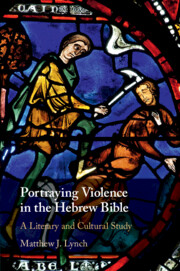Book contents
- Portraying Violence in the Hebrew Bible
- Portraying Violence in the Hebrew Bible
- Copyright page
- Publisher’s note
- Dedication
- Contents
- Acknowledgements
- Abbreviations
- Introduction
- Part I Violence and Ecology
- Part II Violence and Moral Speech
- Part III Violence and Justice
- 6 The Outcry of Violence
- 7 Judicial Responses to Violence
- 8 Violence and the Divine Avenger
- Part IV Violence and Impurity
- Conclusion
- Appendix
- Bibliography
- Index
8 - Violence and the Divine Avenger
from Part III - Violence and Justice
Published online by Cambridge University Press: 06 May 2020
- Portraying Violence in the Hebrew Bible
- Portraying Violence in the Hebrew Bible
- Copyright page
- Publisher’s note
- Dedication
- Contents
- Acknowledgements
- Abbreviations
- Introduction
- Part I Violence and Ecology
- Part II Violence and Moral Speech
- Part III Violence and Justice
- 6 The Outcry of Violence
- 7 Judicial Responses to Violence
- 8 Violence and the Divine Avenger
- Part IV Violence and Impurity
- Conclusion
- Appendix
- Bibliography
- Index
Summary
Chapter 8 examines divine responses to violence, and in particular, to bloodshed and the outcry of the victim. The restoration, or ‘redemption’, of blood by a divine גאל הדם (‘restorer of blood’) is one of the primary ways that biblical texts portray Yhwh’s response to bloodshed. Through a study of select texts, including several from 1–2 Samuel, the following claims are made. First, Yhwh acted as restorer of blood and legal adjudicator for those wrongly accused. He played the role of Mesopotamian kings who addressed cases for claimants and accused. If the human system failed, the poor had legal recourse. Second, because of the frequent emphasis on the cries of the afflicted and poor in ancient Israelite literature, some poetic and narrative traditions came to valorize the renunciation of one’s legal rights to (human) vengeance. Devotion and loyalty to Yhwh were characterized in terms of committing one’s case to Yhwh, not only when the legal system failed, but in recognition of Yhwh’s unique prerogative to intervene.
- Type
- Chapter
- Information
- Portraying Violence in the Hebrew BibleA Literary and Cultural Study, pp. 205 - 218Publisher: Cambridge University PressPrint publication year: 2020



